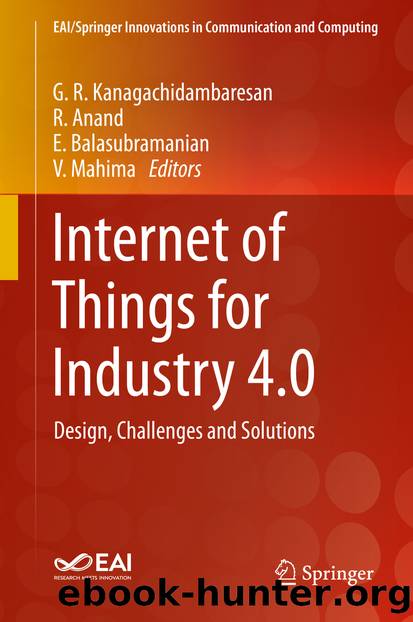Internet of Things for Industry 4.0 by Unknown

Author:Unknown
Language: eng
Format: epub
ISBN: 9783030325305
Publisher: Springer International Publishing
Fuzzy for Intelligent Decision Making
Fuzzy logic (FL) was proposed by Lotfi A. Zadeh in 1965 [11]. Fuzzy logic (FL) provides decision support based on the way humans reason them out. Fuzzy logic is used to represent uncertainty by assigning the input to a range of values between 0 and 1. The binary 0 and 1 refer to completely false and completely true, respectively. The range of values between the extremities is usually formulated using mathematic tools and later processed by computers, to achieve human-like thinking. The gap between qualitative and quantitative modelling can be bridged by applying FL. The input-output mapping of a FL model is quantitative, but internally the system is governed by a set of linguistic rules which are qualitative.
The fuzzy set is formed with elements in the universe, which contains all the possible elements for a related problem. The universe is defined by a membership function μA(x) where x is the number of elements in a base set. A variety of membership functions are defined for various applications, namely, triangular function, trapezoidal function, Γ-function, S-function, exponential function, and Gaussian function.
The process of obtaining the mapping between input and output using fuzzy logic is known as fuzzy inference. Decisions are made within the mapping based on rules. Fuzzy inference involves the processes namely fuzzification and defuzzification. The linking of input variables to output variables through expert knowledge and experience is based on the fuzzy rules. The rules fall under two basic categories such as Mamdani fuzzy rules and Takagi-Sugeno fuzzy rules. The inference system simply referred as a fuzzy expert system consists of modules such as fuzzifier, the inference engine, defuzzifier, and a fuzzy rule base.
The crisp inputs values are fuzzified and further sent to the rule base module. The rules are constructed using conditional IF-THEN statements which are used to control the output variable. The rules are applied to the fuzzy values, and the outputs are evaluated as fuzzy values. To send the fuzzy values to the real world, they are defuzzified and converted back to equivalent crisp values.
FL has been identified as suitable tools for decision making due to their capabilities such as:More choices to define uncertainty
Download
This site does not store any files on its server. We only index and link to content provided by other sites. Please contact the content providers to delete copyright contents if any and email us, we'll remove relevant links or contents immediately.
Kathy Andrews Collection by Kathy Andrews(10519)
The remains of the day by Kazuo Ishiguro(7551)
Spare by Prince Harry The Duke of Sussex(4195)
Paper Towns by Green John(4169)
The Body: A Guide for Occupants by Bill Bryson(3800)
Be in a Treehouse by Pete Nelson(3212)
Harry Potter and the Goblet Of Fire by J.K. Rowling(3045)
Goodbye Paradise(2962)
Never by Ken Follett(2880)
Into Thin Air by Jon Krakauer(2701)
The Remains of the Day by Kazuo Ishiguro(2618)
The Genius of Japanese Carpentry by Azby Brown(2609)
The Cellar by Natasha Preston(2595)
Drawing Shortcuts: Developing Quick Drawing Skills Using Today's Technology by Leggitt Jim(2532)
120 Days of Sodom by Marquis de Sade(2437)
Architecture 101 by Nicole Bridge(2350)
The Man Who Died Twice by Richard Osman(2298)
Machine Learning at Scale with H2O by Gregory Keys | David Whiting(2290)
Fairy Tale by Stephen King(2069)
